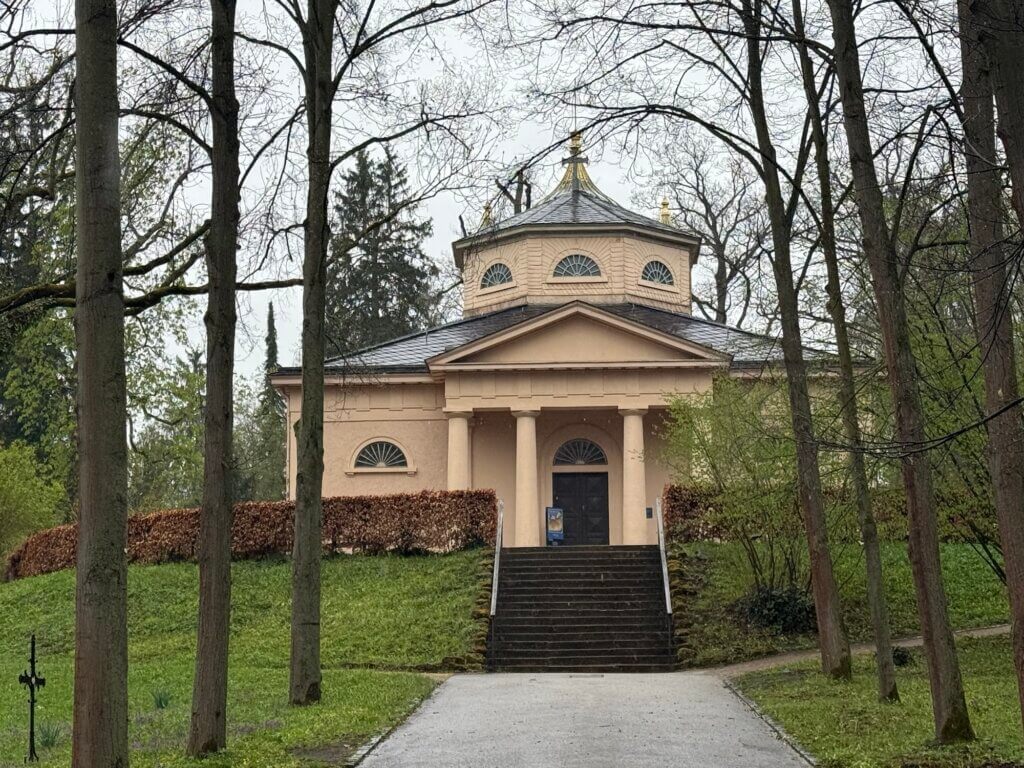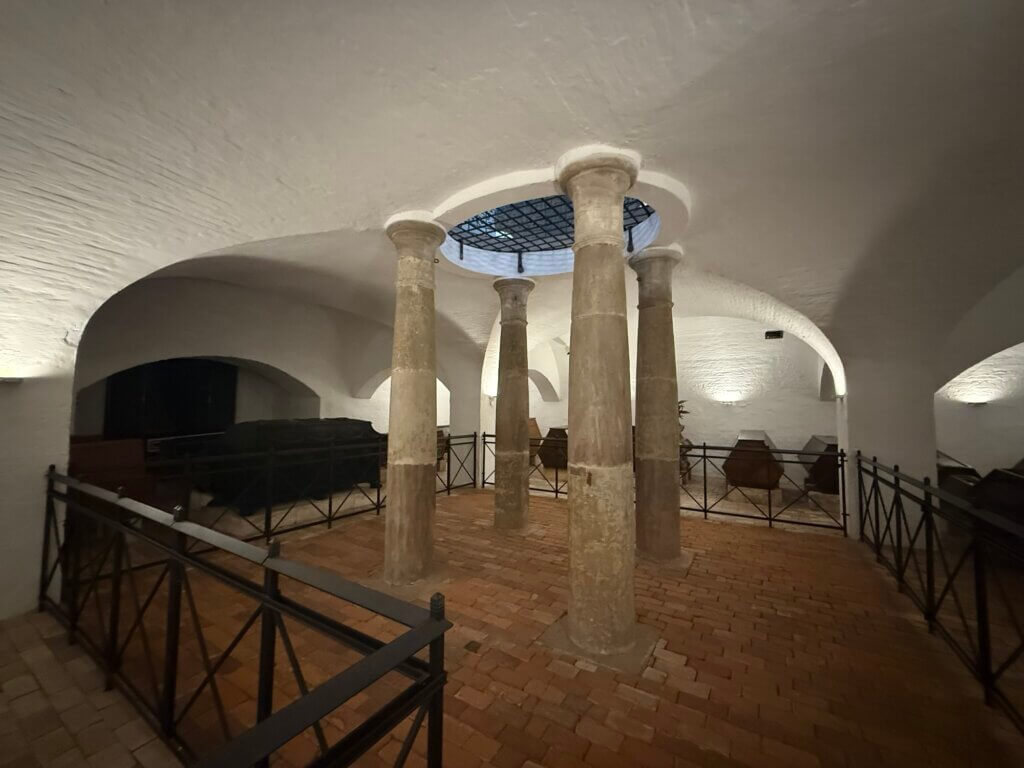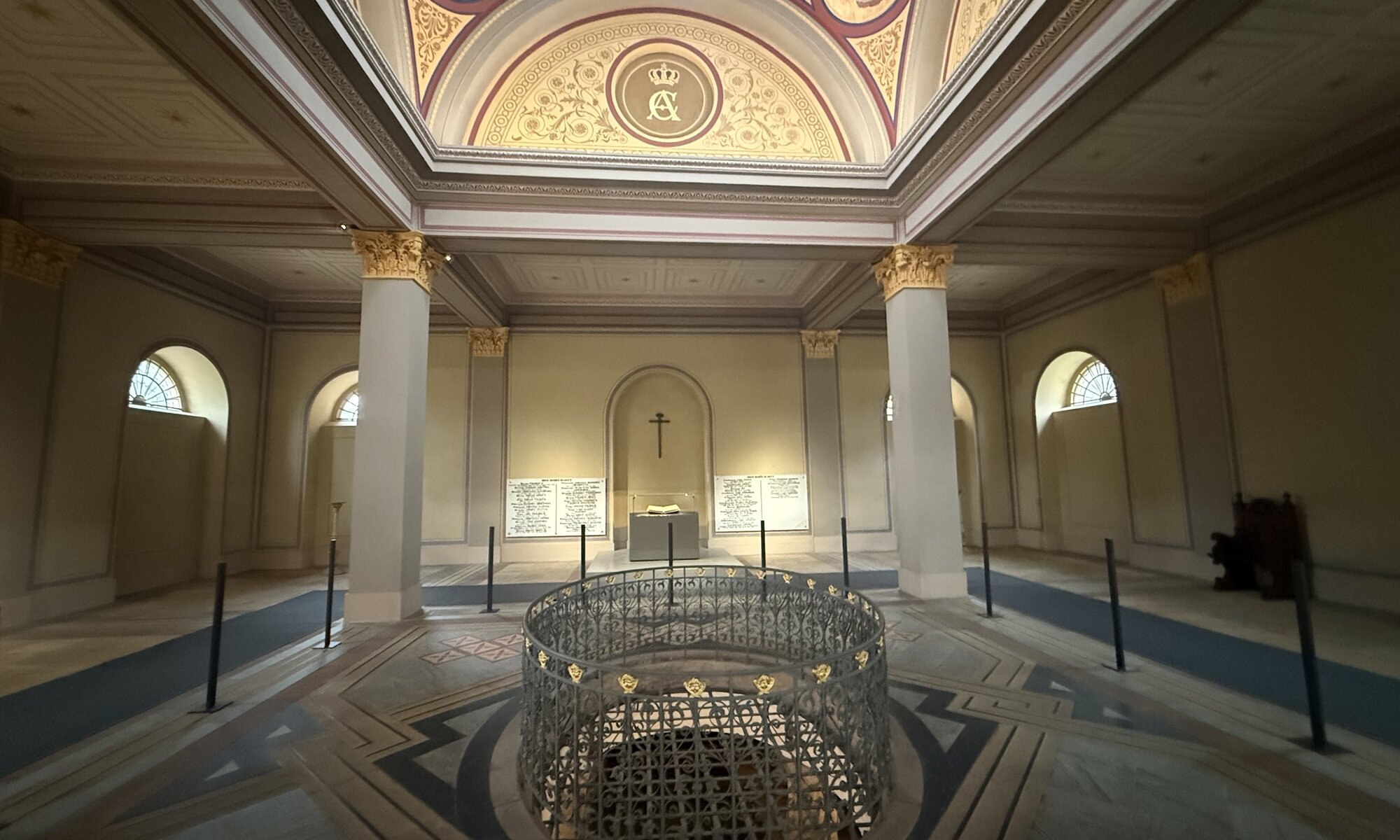The Fürstengruft in Weimar is a neoclassical mausoleum located on the historic cemetery of the city, built between 1823 and 1828 as the burial place for the ducal family of Sachsen-Weimar-Eisenach. The structure features a doric columned entrance, a chapel with a star-adorned dome, and an underground crypt. Its sober architecture was intended to reflect dignity and simplicity, with an oval opening in the floor through which coffins could be lowered into the vault below.



Within the Fürstengruft lie the remains of numerous members of the ducal family, including Duke Wilhelm IV, the founder of the Ernestine line, and his descendants. However, the site is most famous for housing the sarcophagi of Johann Wolfgang von Goethe and Friedrich Schiller, the two towering figures of Weimar Classicism. Their presence transformed the mausoleum from a dynastic resting place into a cultural shrine, attracting visitors from around the world.
Goethe and Schiller are buried here due to their close personal and intellectual connection to the Weimar court and to each other. Goethe, who died in 1832, specifically requested to be interred beside Schiller, whose supposed remains had been moved to the Fürstengruft in 1827. Their proximity in death symbolized their legendary friendship and the cultural ideals they represented, making the mausoleum a pilgrimage site for admirers of German literature.
However, Schiller’s sarcophagus is now empty. In 2008, scientific analysis revealed that the bones believed to be Schiller’s did not match his DNA and were actually from several different individuals. As a result, the remains were removed and the sarcophagus left vacant, leaving the true location of Schiller’s body unknown and adding a layer of mystery to the site.
Fürstengruft
Weimar
Germany
https://www.klassik-stiftung.de/fuerstengruft
Loading map...


